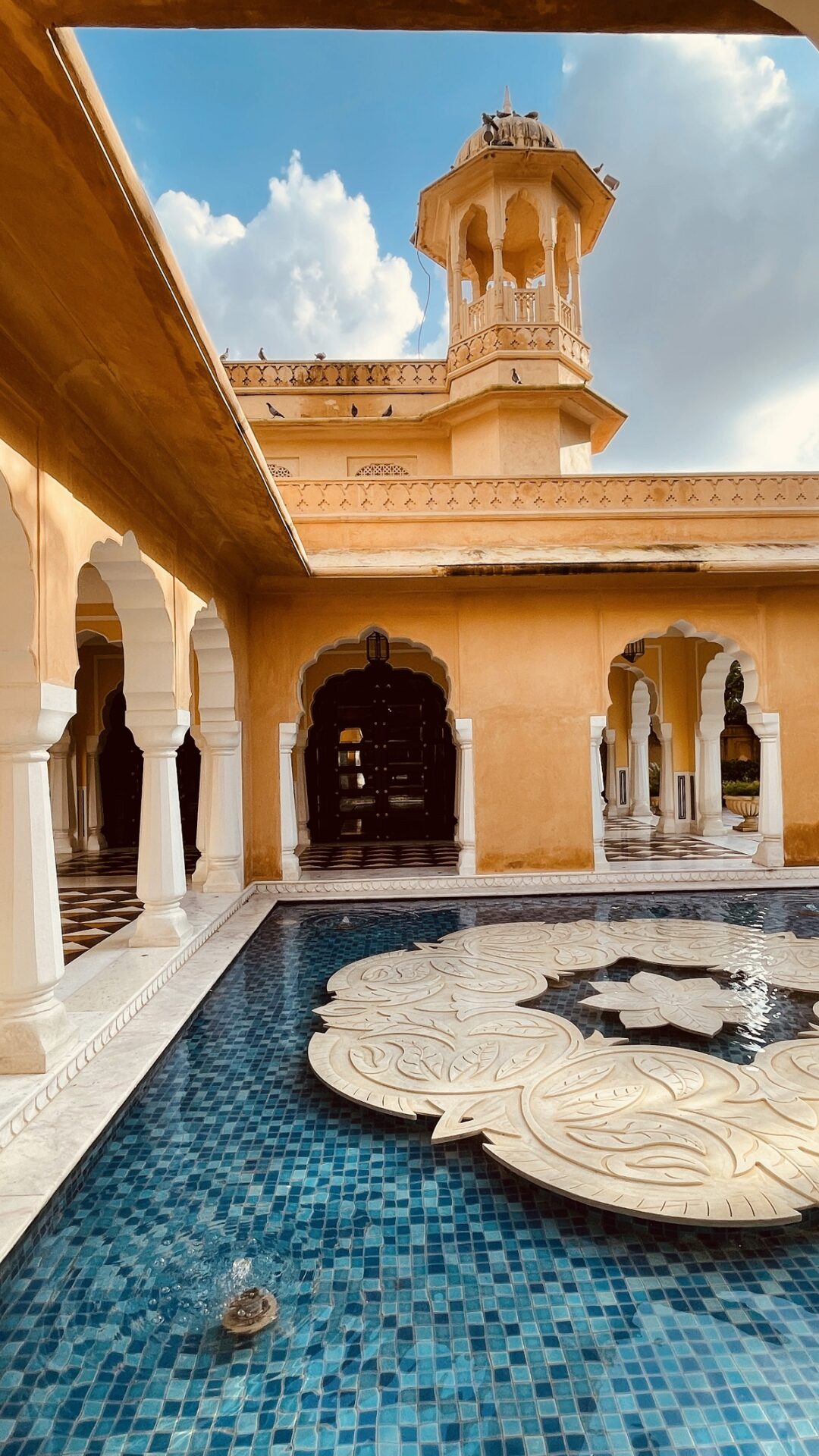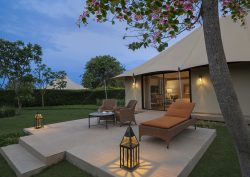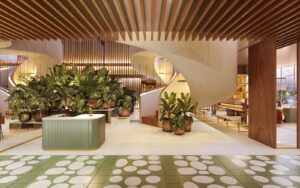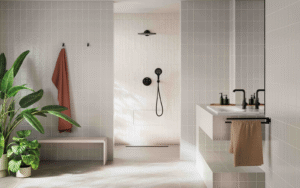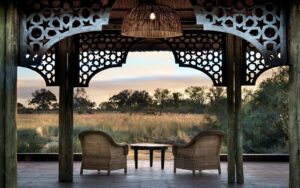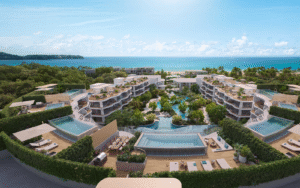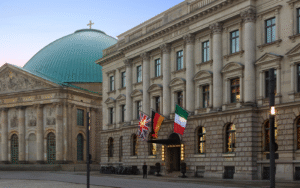Taj’s newest heritage property — the Sawai Man Mahal is an impressive palace-hotel conversion by Jaipur-based architecture and design practice IDEAS, inviting guests to experience the cultural grandeur of Rajputana hospitality…
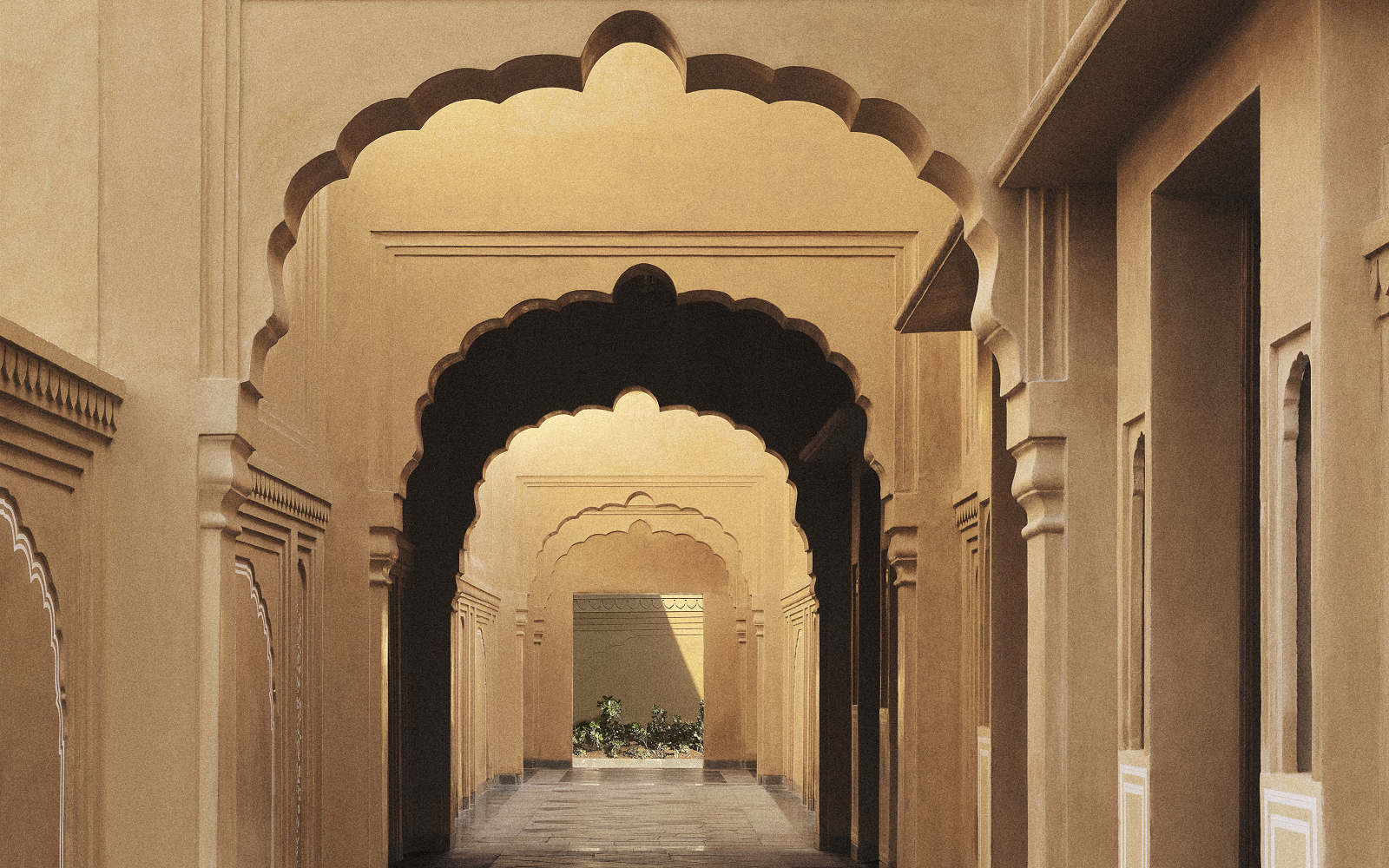
The Sawai Man Mahal, a majestic heritage hotel in the Taj Hotels portfolio, is nestled in the heart of Jaipur, adjoining the lush gardens of the 19th-century Rambagh Palace and a stone’s throw from the walled city. Under the patronage of Maharaja Sawai Man Singh II, the last ruler of Jaipur, the luxury hotel underwent numerous conversions, from a modest four-room pavilion and a royal residence to a heritage resort synonymous with Rajasthani hospitality and culture.

Image credit: Sawai Man Mahal
The design brief emphasised achieving a harmonious balance between heritage and modernity while creating a luxurious hospitality experience for the guests. Sensitive interventions preserve the palace’s original architectural features while introducing new elements that elevate the sense of luxury associated with the Taj group.
The design team at IDEAS placed a significant focus was on creating an open and airy ambience. This was accomplished through deliberate spatial planning and design interventions, resulting in expansive and inviting areas that promote a sense of openness and tranquillity, enhancing the overall guest experience.
The site features a strategically positioned alfresco area at the entrance plaza, designed to provide guests with an intimate and exclusive experience amidst the verdant surroundings. Another integral feature is the swimming pool, which features a traditional design with a hand-painted wall serving as a backdrop. Equipped with a jacuzzi and temperature control, the pool ensures a comfortable and enjoyable experience throughout the year.
The guest suites feature a private courtyard for a unique and personalised experience. These courtyards serve as intimate outdoor spaces for guests to relax, enhancing their connection to nature. Trees on-site have been preserved and celebrated, complementing the Rajputana character of the built spaces.

Image credit: Sawai Man Mahal
Meticulous incorporation of local materials and traditional design techniques pays homage to Jaipur’s fabled architectural history. Patterns reminiscent of Rajasthan’s forts and palaces are thoughtfully integrated into the design scheme across various surfaces, including floors, walls, and ceilings, adding a distinctive touch of heritage to the overall aesthetic. Local crafts and techniques, such as araish (a traditional lime plaster technique) and thikri (mirror work), were also incorporated in significant public areas, adding intricate detailing that reflects the region’s artistry.
The corridors and pathways are constructed with locally sourced materials, including Yellow Jaisalmer Sandstone, Ambaji White Marble, and Red Mandana stone from Jodhpur. The paths follow a distinctive pattern crafted from local sandstone, known for its durability and natural beauty. The guestrooms are crafted in Ambaji White Marble, which is renowned for its elegance and timeless quality.

Image credit: Sawai Man Mahal
One of the primary challenges in restoring Sawai Man Mahal was preserving its historical integrity while introducing elements that cater to modern comfort and luxury. Maintaining the structure’s original architectural motifs, layouts, and materials was crucial to preserving its cultural significance. The transformation from a convention centre to a luxury hotel required substantial reconfiguration of spaces, necessitating innovative design approaches that respected the original structure. The creative approach to adaptive reuse ensured that Sawai Man Mahal retained its functional relevance while offering a luxurious experience rooted in history.

Image credit: Sawai Man Mahal
A notable feature of the Sawai Man Mahal restoration is its commitment to sustainability, and measures were implemented to ensure the project aligns with environmental conservation goals. Water is conserved through an on-site sewage treatment plant and reused for landscape irrigation. Rainwater harvesting systems, on the other hand, reduce reliance on external water sources. The installation of solar panels emphasises the project’s commitment to renewable energy. Strategically placed windows and skylights help maximise natural light, reducing dependency on non-renewable power sources. Furthermore, smart thermostats optimise heating and cooling systems, ensuring energy is not wasted. The project’s commitment to sustainability extends to using solar hot water systems and zero plastic waste.

Image credit: Sawai Man Mahal
The courtyard design between suites aids natural ventilation, cooling the spaces through traditional architectural techniques. Water features, including reflective pools, further enhance the microclimate, creating a comfortable environment even in Rajasthan’s arid heat. Incorporating green spaces, vertical gardens, and natural cooling methods improves air quality and minimises the property’s carbon footprint. Such initiatives make Sawai Man Mahal a benchmark in sustainable heritage hospitality.
The restoration of Sawai Man Mahal has reinforced Jaipur’s status as a prime destination for heritage tourism, where architectural conservation and luxury hospitality converge. By showcasing local craftsmanship, preserving historical structures, and emphasising sustainable practices, Sawai Man Mahal exemplifies how historic properties can be revitalised to create unique and enriching travel experiences.
Main image credit: Sawai Man Mahal






